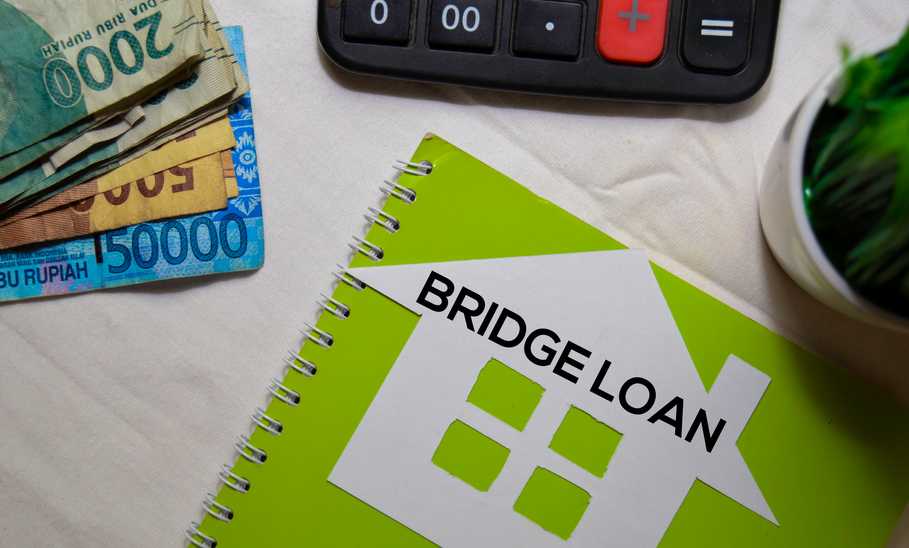What Is a Bridge Loan? A Complete Guide to Bridge Financing

Our evaluations and opinions are not influenced by our advertising relationships, but we may earn a commission from our partners’ links. This content is created by TIME Stamped, under TIME’s direction and produced in accordance with TIME’s editorial guidelines and overseen by TIME’s editorial staff. Learn more about it.
When you purchase a new home, you typically use the proceeds from selling your current home to cover the cost. Unfortunately, closing dates don’t always sync up as we’d like. In situations like these, bridge loans can help give you the cash you need during this period.
Bridge loans are a great option when you need to secure short-term financing. However, the terms for most bridge loans can fluctuate significantly from one lender to the next. Some lenders agree to pay off your first mortgage when you close on the bridge loan. Other lenders use the equity in your first mortgage to cover the down payment on your new home.
How you pay for the bridge loan can also vary. Some lenders require monthly payments, while others allow upfront or end-of-term lump-sum interest payments.
Even though many of the terms and conditions can vary, there are a few things about bridge loans that are fairly constant between lenders:
Let’s assume your current home is valued at $300,000 and you have $100,000 left on your mortgage. You just found out that your job is relocating your position across the country, meaning you need to find a place to live quickly. Unfortunately, you won’t have the cash to purchase a new home without first selling your current home. That’s when you decide to take out a bridge loan for $175,000. The first $100,000 from the loan would pay off your current mortgage, and you’d have another $75,000 left to cover the down payment on a new house. You'd repay the bridge loan once you find a buyer and sell your current home.
While most bridge loans are similar, they vary significantly in how they are put together. Lenders structure bridge loans based on the individual borrower's creditworthiness. Here are a couple of ways they can be set up.
Some lenders set up a payment schedule based on the six-to-12–month loan term. Borrowers make monthly payments on the loan, and the balance will be repaid at the end of the term or when you close on your home.
Other lenders structure a bridge loan with interest-only payments. These payments can either be made as a lump sum when the loan term expires, or they can be deducted upfront from the loan amount you receive.
While bridge loans are a great way to access cash in a crunch, they aren’t for everyone. Lenders consider a few things when looking at your application.
Lending requirements for a bridge loan aren’t as black and white as they are for a permanent loan. Lenders have a little more flexibility when they’re underwriting the loans. While some lenders require borrowers to have a credit score over 700, others may be willing to approve an application for a borrower with a 575 credit score.
The required debt-to-income ratio (DTI) is another matter left up to the lender's discretion, but most will want your DTI to be no higher than 50%.
Most lenders let you borrow up to 80% of your home's value. This means you’ll need at least 20% equity in the home.
If a bridge loan is right for your situation, the process is very similar to getting a traditional mortgage. After choosing the lender, you fill out the application, and it will begin the underwriting process. This includes a hard pull on your credit to check your creditworthiness.
Once approved for the loan, the lender will likely complete an appraisal on the property.
As you move toward closing on the loan, you’ll want to ensure you understand the overall costs. Closing costs can make bridge loans expensive. On average, you can expect the total closing costs to be between 1.5% and 3% of the loan value. That could be as much as $6,000 on a $200,000 loan.
There are several situations in which getting a bridge loan would make sense. Here are a few.
Like any other financial decision you make, it’s essential to consider all the pros and cons.
A bridge loan is meant to help you through a transition period. It provides you with the cash needed to purchase a new home while you’re in the process of selling your current home. Bridge loans typically have higher interest rates, terms of anywhere from six to 12 months, and a quick close.
Once you’ve sold your existing home, you’ll pay off your bridge loan and move to a permanent loan for your new home. Permanent loans have slightly lower interest rates and longer loan terms.
A bridge loan can be a great way to access cash when you’re in a time crunch, but it won’t be right for everyone. Here are a few alternatives to consider.
If you’ve found a new home and know the exact amount you need for the down payment, you can use a home equity loan. This allows you to borrow money from your current home. Home equity loans tend to have lower interest rates than bridge loans, and you can use a longer repayment period if needed.
Like home equity loans, HELOCs provide access to equity in your home at a lower cost. However, instead of a lump-sum payout like a home equity loan, a HELOC allows you to draw your funds when needed and only make payments on the money you’ve borrowed. That saves on interest compared to borrowing a large sum at once.
If you want to buy a new home but don't have enough money for a 20% down payment, an 80-10-10 loan could be an option. With this type of loan, you use a 10% down payment and then receive two mortgages. The first mortgage covers 80% of the purchase price, and the other covers the remaining 10%. Once you sell your current home, you can use any extra money to pay off the smaller mortgage. Plus, by going this route, you’ll be able to avoid mortgage insurance for having a down payment of less than 20%.
If you own a small business, you could take out a business line of credit and use the funds to cover the down payment on your new home. While you’ll have up to 10 years to repay the loan, interest rates tend to be higher than what you’d receive from a bridge loan.
If you have excellent credit and a low DTI, you can apply for a personal loan through a company like Lightstream and potentially receive a lower interest rate than you could be charged by a bridge loan. Terms of a personal loan vary by lender, including whether or not you need to put up collateral for the loan.
A bridge loan can be a great option if you need to purchase a new home before you can sell your current home. Before deciding, it’s important to understand how bridge loans work, and the pros and cons involved.
Bridge loans have many pros, but they also have some cons. The biggest is that you’ll need at least 20% equity in your current home to be approved. Plus, most bridge-loan lenders require you to use them for your permanent loan when you buy your new home.
The qualification requirements for a bridge loan can vary significantly among lenders. While some might require a high credit score and low DTI, other lenders may be willing to approve your loan with a lower credit score and slightly higher debt amounts.
Some bridge loans can close in as little as a few days, but others can take up to two weeks.
Most bridge loans are anywhere from six to 12 months.
Not everyone will qualify for a bridge loan. Lenders require borrowers to have at least 20% equity in the home. Plus, your credit score and DTI must meet their qualifications.
The information presented here is created by TIME Stamped and overseen by TIME editorial staff. To learn more, see our About Us page.



